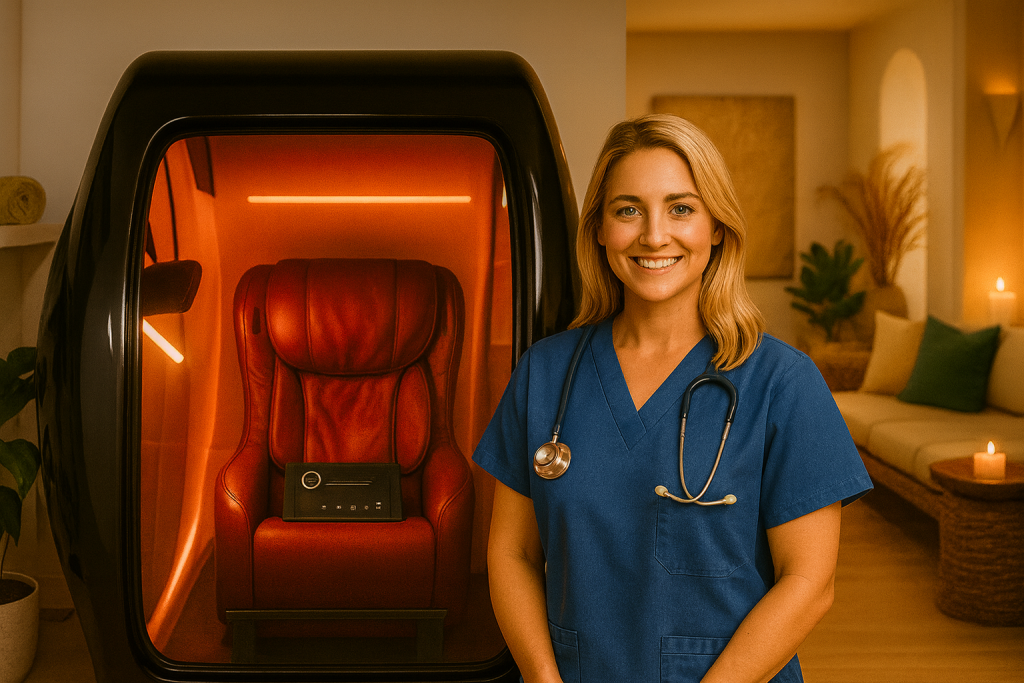The Emerging Role of Hyperbaric Oxygen Therapy (HBOT)
A New Era in Neuroregeneration
Parkinson’s disease (PD) affects millions worldwide, often defined by the progressive loss of dopamine-producing neurons and the motor challenges that follow. While traditional medicine focuses on symptom management, new regenerative science is uncovering how hyperbaric oxygen therapy (HBOT) can enhance the body’s natural ability to repair and regenerate—starting at the cellular level.
Recent case observations and published studies suggest that HBOT may increase circulating stem cells and activate neurorepair mechanisms, creating a fertile environment for recovery and improved function in those living with Parkinson’s.
How HBOT Stimulates Stem Cell Production
Inside a hyperbaric chamber, patients breathe nearly pure oxygen at elevated atmospheric pressure (typically between 1.3 and 2.0 ATA). This process dramatically increases oxygen saturation in the blood and tissues—far beyond what’s possible under normal conditions.
Scientific studies show that this hyper-oxygenation can:
- Mobilize stem cells from bone marrow into circulation—one Israeli study found an 800% increase after 20 consecutive HBOT sessions.
- Enhance mitochondrial activity, improving energy production within neurons.
- Reduce neuroinflammation, which is linked to neuronal death in PD.
- Promote angiogenesis, the creation of new microvessels, improving nutrient and oxygen delivery to brain tissue.
In several case studies, Parkinson’s patients undergoing mild hyperbaric therapy (mHBOT) at 1.3–1.5 ATA experienced improvements in tremors, energy levels, sleep, mood, and gait—results that corresponded with elevated stem cell activity markers in bloodwork.
Synergistic Nutritional Support for Stem Cell Growth
While oxygen provides the activation signal, the body also needs the right nutritional building blocks to differentiate and maintain healthy stem cells. For individuals undergoing HBOT, supporting the process with key nutrients may amplify results.
Suggested Supplements (under professional guidance):
| Category | Key Nutrients | Purpose |
|---|---|---|
| Mitochondrial Support | CoQ10, PQQ, L-Carnitine, Alpha-Lipoic Acid | Enhances cellular energy and neuroprotection |
| Neuroregenerative Support | Omega-3 DHA/EPA, Phosphatidylserine, Lion’s Mane Mushroom | Supports neuronal repair and cognitive function |
| Antioxidant Defense | Vitamin C, N-Acetyl Cysteine (NAC), Glutathione | Reduces oxidative stress during oxygen exposure |
| Stem Cell Modulation | Resveratrol, Curcumin, Fisetin, Green Tea Extract | Encourages stem cell activation and reduces inflammation |
| Vascular Health | Beetroot (NO booster), Ginkgo Biloba | Enhances blood flow and oxygen delivery |
(Always consult a healthcare professional before starting supplements, especially if on medication.)
Integrating HBOT Into a Parkinson’s Wellness Plan
The key to success with HBOT lies in consistency and personalization. A typical wellness program might include:
- 20–40 HBOT sessions at 1.3–2.0 ATA
- Balanced nutrition and hydration
- Light exercise or physical therapy post-session to encourage neuroplasticity
- Restorative sleep and stress-reduction strategies
Many patients notice subtle improvements—clearer thinking, steadier movement, and greater endurance—within the first few weeks, with cumulative benefits appearing over several months.
Case Highlights
- Case #1: A 67-year-old male with mid-stage Parkinson’s completed 40 mHBOT sessions over eight weeks. Post-treatment assessments showed improved dexterity and reduced rigidity, aligning with blood test evidence of higher circulating CD34+ stem cells. PubMed Link
- Case #2: A 59-year-old female reported reduced tremors and improved energy after 20 sessions combined with CoQ10 and omega-3 supplementation. PubMed Link
- Case #3: A functional medicine clinic in California observed measurable improvements in balance and mood stability in PD patients integrating mHBOT with antioxidant therapy and physical rehabilitation. PubMed Link
These results, while anecdotal, align with growing literature showing HBOT’s role in cellular regeneration and neurological health.
Conclusion: A Natural Pathway Toward Cellular Renewal
Hyperbaric oxygen therapy is proving to be much more than an oxygen boost—it is a biological reset mechanism that activates the body’s inherent repair systems. By stimulating stem cell production and reducing inflammation, HBOT offers hope for those managing neurodegenerative conditions like Parkinson’s.


